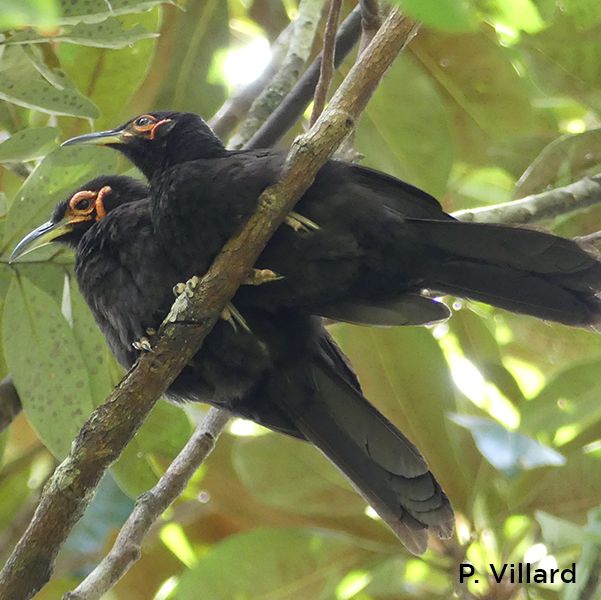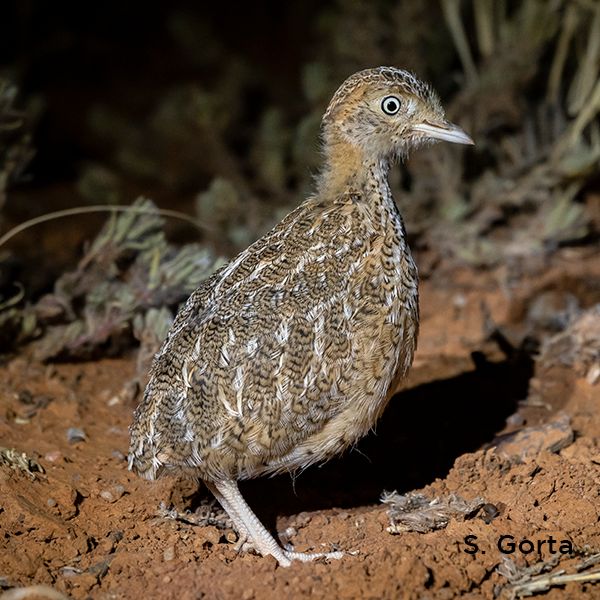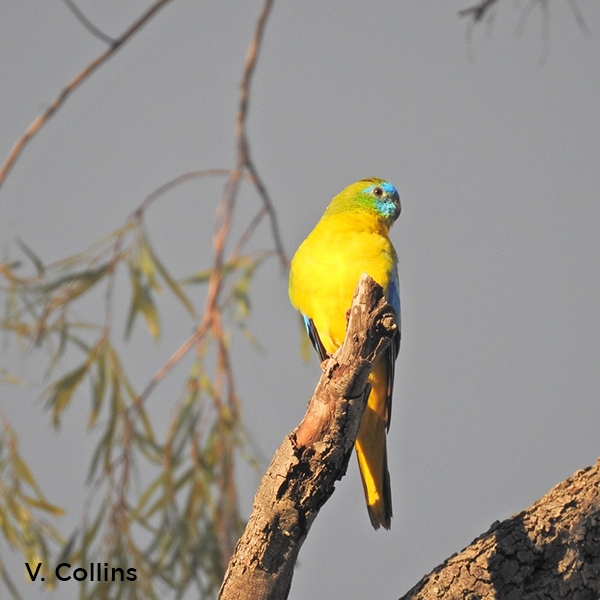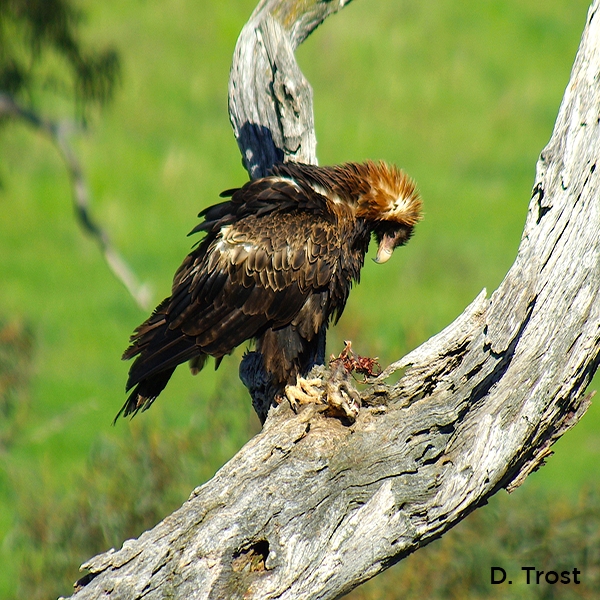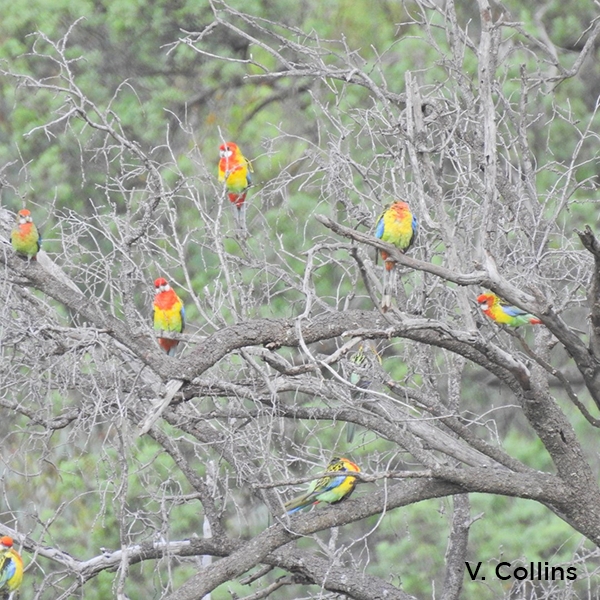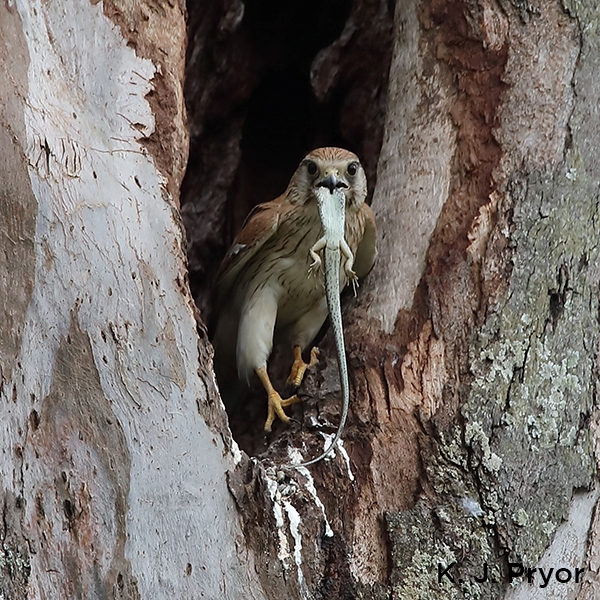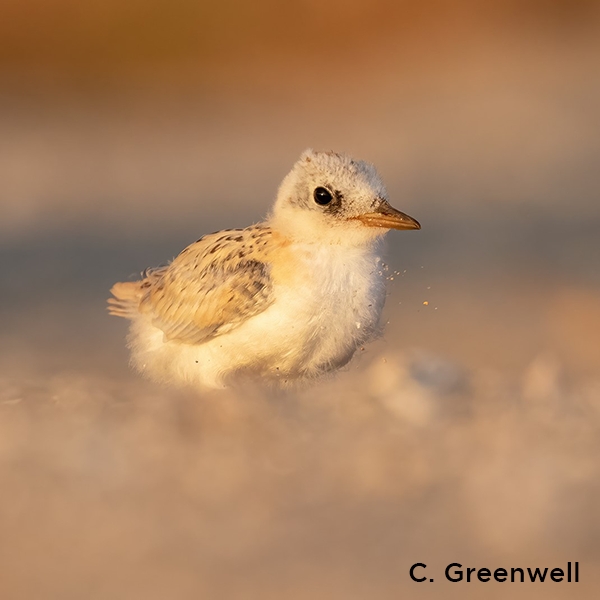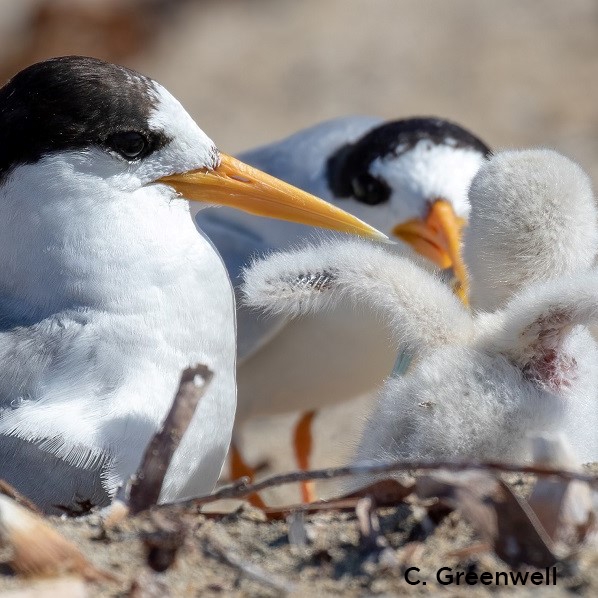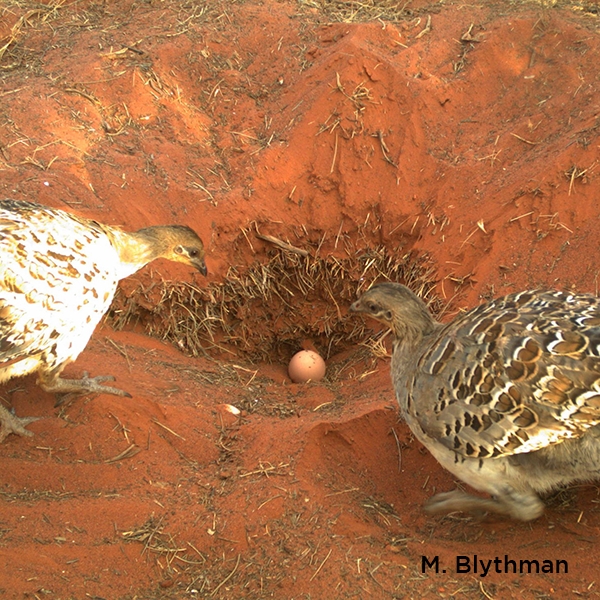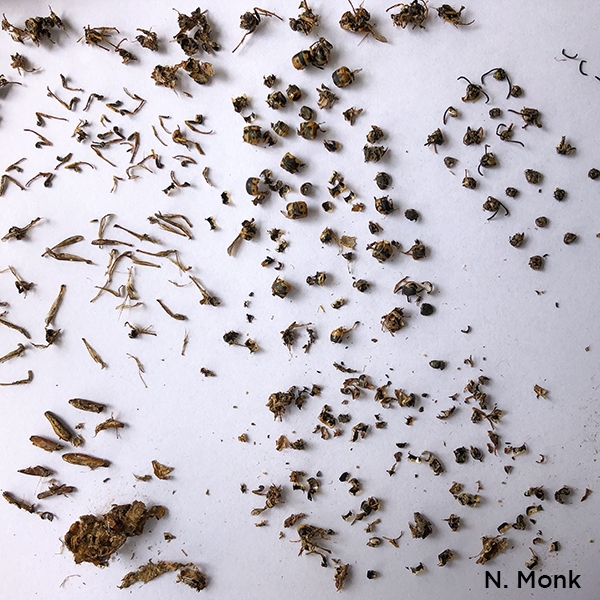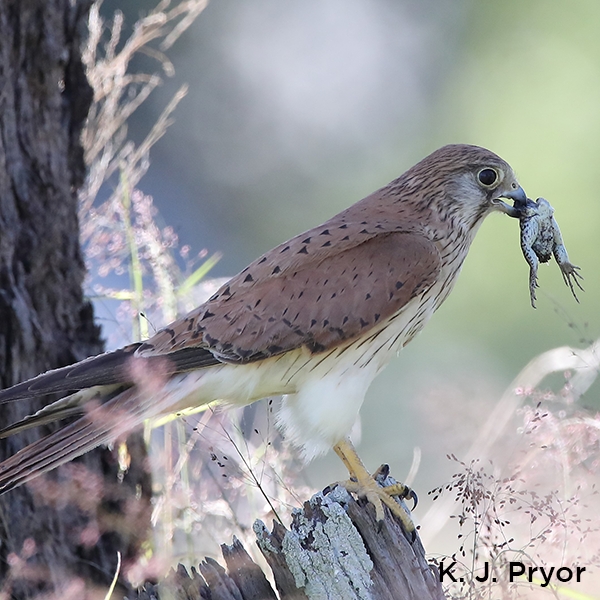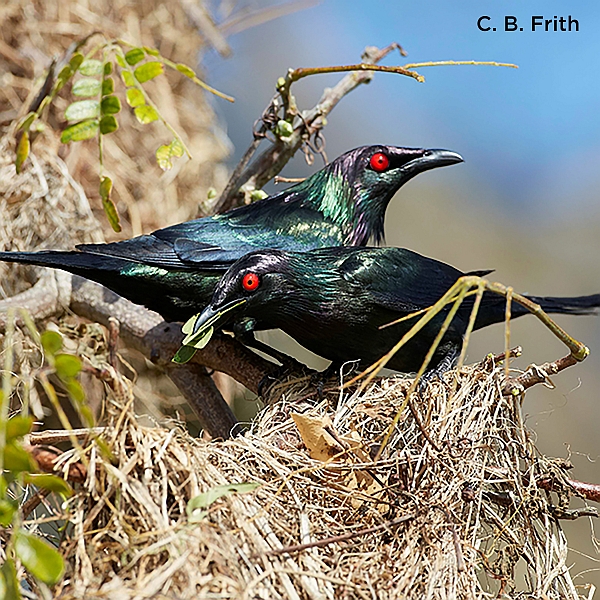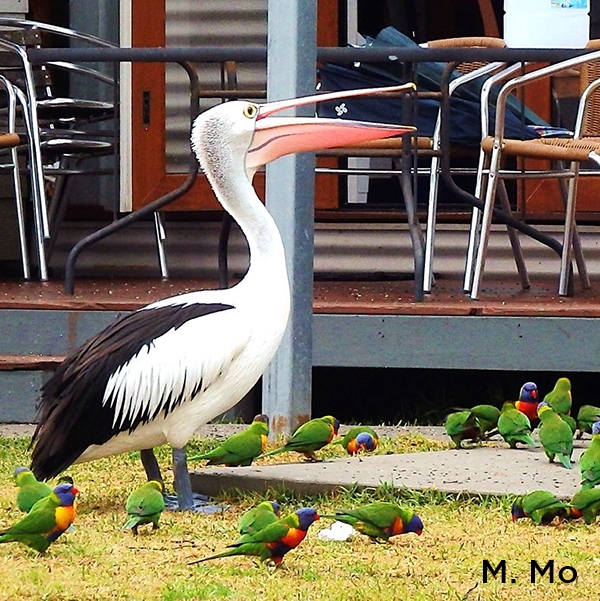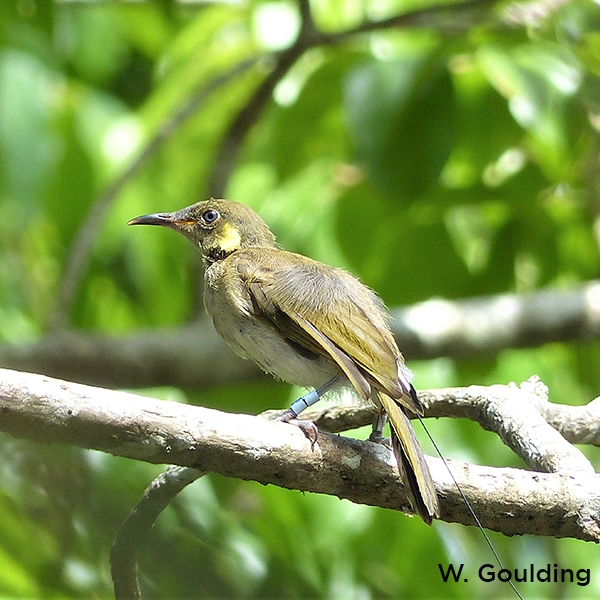A novel observation of food dunking in the Australian Magpie Gymnorhina tibicen
E. Drinkwater, J. Ryeland, T. Haff, K.D.L. Umbers
pp. 95-97
Abstract
We document putative food-dunking behaviour in the Australian Magpie Gymnorhina tibicen. While conducting an experiment on the Mountain Katydid Acripeza reticulata, we presented one to a wild adult Magpie, which appeared to conduct ‘dunking behaviour’ while processing the insect. The Magpie carried the katydid to a puddle of water, dunked the katydid, and then dropped it. A nearby juvenile Magpie then retrieved the katydid and performed the same dunking behaviour before eating the katydid. To our knowledge, this is the first reported instance of food dunking by Australian Magpies. We hope this observation will facilitate future investigations into behavioural adaptations to dietary choices of Magpies.
References
Cable, J. & Nocke, H. (1975). Isolation of s-Butyl β-D-Glucopyranoside from Acripeza reticulata. Australian Journal of Chemistry 28, 2737–2739.
Cnotka, J., Güntürkün, O., Rehkämper, G., Gray, R.D. & Hunt, G.R. (2008). Extraordinary large brains in tool-using New Caledonian crows (Corvus moneduloides). Neuroscience Letters 433, 241–245.
Dearborn, D.C. & Gager, A.B. (2009). Food-dunking behaviour by a Eurasian Jay Garrulus glandarius. Sandgrouse 31, 40–41.
Emery, N.J. & Clayton, N.S. (2004). The mentality of crows: Convergent evolution of intelligence in corvids and apes. Science 306, 1903–1907.
Jones, C. (1979). Birds dunking food. British Birds 72, 189–190.
Jønsson, K.A., Fabre, P.H., Kennedy, J.D., Holt, B.G., Borregaard, M.K., Rahbek, C. & Fjeldså, J. (2016). A supermatrix phylogeny of corvoid passerine birds (Aves: Corvides). Molecular Phylogenetics and Evolution 94, 87–94.
Kaplan, G. (2008). Alarm calls and referentiality in Australian magpies: Between midbrain and forebrain, can a case be made for complex cognition? Brain Research Bulletin 76, 253–263.
Kasper, S. (2012). Learned prey handling of Texas horned lizards by a Greater roadrunner from the rolling plains of Texas. Texas Ornithological Society 45, 59.
Kearns, A.M., Joseph, L. & Cook, L.G. (2013). A multilocus coalescent analysis of the speciational history of the Australo-Papuan butcherbirds and their allies. Molecular Phylogenetics and Evolution 66, 941–952.
McCormick, J. (2007). Possible tool use by an Australian magpie (Gymnorhina tibicen). Notornis 54, 116–117.
Menkhorst, P. (2012). The food and foraging rate of an Australasian Bittern. Australian Field Ornithology 29, 133–142.
Morand-Ferron, J., Lefebvre, L., Reader, S.M., Sol, D. & Elvin, S. (2004). Dunking behaviour in Carib grackles. Animal Behaviour 68, 1267–1274.
Purser, G.L. (1959). House sparrows soaking hard bread to soften it. British Birds 52, 199–200.
Rentz, D.R. (1996). Grasshopper Country. University of New South Wales Press, Sydney.
Rollinson, D.J. (2002). Food caching behaviour in the Australian Magpie (Gymnorhina tibicen). Sunbird 32, 19–21.
Umbers, K.D.L. & Mappes, J. (2015). Postattack deimatic display in the mountain katydid, Acripeza reticulata. Animal Behaviour 100, 68–73.

